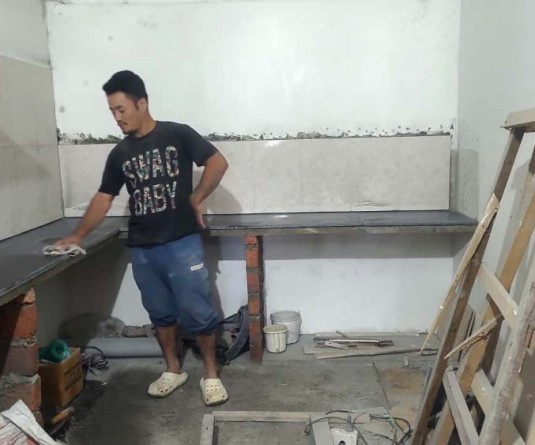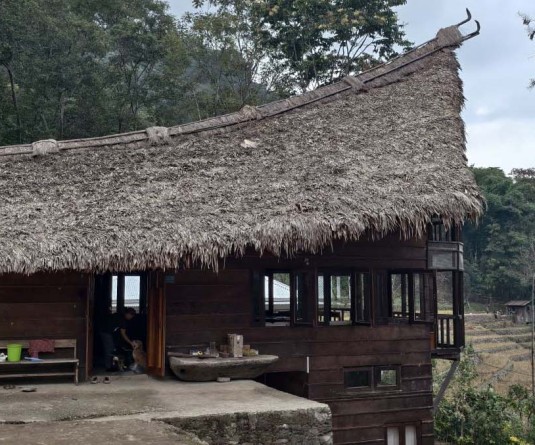Morung Express News
Kohima | February 4
With the recent presentation of the Union Budget 2025-26 by the Finance Minister, Nirmala Sitharaman in the Parliament on February 1, there have been mixed reactions regarding how it will impact Nagaland’s overall economic growth.
Joint Secretary, Finance, Reny Wilfred outlined key provisions, particularly in rural credit access, entrepreneurship, education, logistics, tourism, etc., that could impact the state in the coming years. He expressed optimism that these could significantly contribute to the state’s growth and development.

A major highlight of the budget is the introduction of the Grameen Credit Score, which aims to enhance credit access for rural communities struggling to secure loans due to credit score limitations. “We have to wait for the final outlines on how it is going to help the rural public in availing credit from financial institutions,” said Wilfred.
Additionally, he informed that there has been an improvement in the credit guarantee facility for start-ups and exports, with an increased amount of Rs 20 cr. Explaining further, he said that without third-party collateral, they can get loans from banking institutions up to Rs 20 cr, with the central government through CGTMSC standing as the guarantee.
Furthermore, the guarantee for MSMEs has also been increased to Rs 10 crore, which is expected to make loans more accessible for entrepreneurs in Nagaland, he said.
For rural agricultural activities, Wilfred informed that the credit limit for Kisan Credit, which is collateral-free, has been increased from Rs 1.6 lakh to Rs 3-5 lakh, which he maintained will benefit small-scale farmers engaged in poultry, piggery, and dairy farming.
Support for start-ups and first time entrepreneurs
With an additional Rs 10,000 cr allocated to the Alternate Investment Fund to promote start-ups, Wilfred said Nagaland is looking forward to this initiative, as it can help start-ups secure initial seed funds to grow.
A new scheme, introduced for the first time in the Union Budget 2025, Wilfred said, is aimed at first-time entrepreneurs, with capacity-building and managerial skill training. “This is going to benefit Nagaland as about 70-90% of entrepreneurs are first-time entrepreneurs,” he added.
Digital education and infrastructure
The introduction of 50,000 Atal Tinkering Labs, he opined, is expected to encourage interest in science and mathematics among students. “If Nagaland can secure 50-100 labs, it will help break our students’ hesitation towards these subjects,” Wilfred said.
Furthermore, he mentioned the establishment of five National Centres of Excellence in Skilling and improved digital connectivity for schools and Primary Health Centres (PHCs).
Air connectivity, logistics and export promotion
Highlighting the UDAN Scheme, which will establish 130+ new airports and helipads with a focus on smaller airports in hilly, aspirational districts, and NE states, Wilfred said this is important for the state, as it facilitates the upgrading of infrastructure for air cargo, especially for high-value perishable goods, such as horticultural produce.
For this, he said India Post has been identified as a delivery partner. He also mentioned the support for the creation of a Unified Logistics Interface and an Export Promotion Mission, which he viewed as a potential game-changer for Nagaland’s agricultural exports.
Tourism development, employment generation
He also stated that the budget emphasizes tourism for employment-led growth, which includes creating key infrastructures, skill development, Mudra loans, and providing performance-linked incentives and ease of travel.
Since Nagaland is moving away from traditional tourism and focusing on curated or experiential tourism, which is more employment-oriented, Wilfred claimed this gives the state a good opportunity to avail specific benefits that are tailor-made for Nagaland, “something we have been wanting for quite some time.”
He also mentioned the Geospatial Infrastructure, noting that Nagaland’s GIS team has already received recognition from the Prime Minister’s Office for excellence in this field.
Awaiting clarity on labour-intensive sectors
One area where further details and clarity are awaited, Wilfred pointed out, is in the Labour-Intensive Sectors. Wilfred observed that Nagaland typically has highly skilled manpower with good etiquette and communication skills, falling within the middle-range and above-middle-range categories. “We will have to wait for the policy guidelines to come out and see how well it aligns with the needs of Nagaland,” he stated. “These are the takeaways from the Union Budget 2025 for Nagaland’s growth,” he stated.
‘Tourism and resource sector are keys to economic growth’
Meanwhile, an Economics Professor from Nagaland University, Dr Zarenthung Ezung, suggested a clear strategy for resource generation and addressing fiscal deficits.
While state-owned revenue is “just a meagre percentage,” Dr Ezung emphasized the need for revenue generation, particularly in sectors like mineral extraction and oil exploration, which have remained stalled for years.
He also pointed out that tourism has the potential to be a major revenue-generating sector, provided the government invests in both infrastructure and public awareness.
Despite Nagaland’s rich biodiversity, scenic landscapes, and cultural heritage, he observed that it has remained an ‘untapped potential’ due to logistical hurdles. Citing examples, Dr Ezung noted that while tourists arrive in Dimapur or Kohima, there is little connectivity to rural areas, which hold significant tourism potential.
Comparing Nagaland to Sikkim and Darjeeling, where well-organized travel agencies provide seamless transport to remote locations, he stressed the need for better travel agency networks in the state.
To address this, he suggested that the government must provide logistical support and training to travel agents and create more awareness among the public to improve connectivity and enhance the tourism experience.
With power being a basic requirement for growth and development, the professor also suggested implementing a rebate metering system to curb power leakage, stating that “if implemented, it would be efficient enough to curb power leakage.” He also opined that the government should focus on developing micro-hydro projects to improve energy availability in both rural and urban areas, which he believes could enhance power efficiency and support overall economic growth.
No substantial gains, says MP Supongmeren
On the other hand, Supongmeren Jamir, MP (Lok Sabha), expressed skepticism about the feasibility and potential impact of the Union Budget 2025 on Nagaland. “While the proposals may sound convincing, in practice and technically, they may not be feasible or beneficial for our state,” he stated.
Jamir argued that the budget adopts a "rotational development" approach, where many states, including Nagaland, may be left behind. He further pointed out that despite references to the Northeast, there are no specific earmarked funds or targeted allocations for the region.
Regarding the agricultural sector, Jamir maintained that without the establishment of infrastructure such as world-class cold storage facilities for product aggregation, the sector's impact on the common people would be minimal.
He also expressed concern about the lack of support for the MSME (Micro, Small & Medium Enterprises) sector in Nagaland, which has been positioned as a ‘second engine’ of growth. Jamir highlighted that the MSME department in the state is severely understaffed, with only one assistant director managing the office, instead of the required team, which should include a joint director, two deputy directors, and four assistant directors.
The MP also brought attention to the funding challenges posed by the central-to-state funding ratios, particularly the 70:30 and 90:10 ratios, which place a heavy burden on Nagaland given its financial constraints.
On the tourism sector, Jamir criticized the lack of concrete projects or allocations specifically aimed at the Northeast. “The budget is mainly designed for certain sectors, not for the common people. It will not reach the common people,” he stated.






